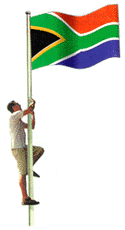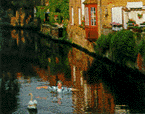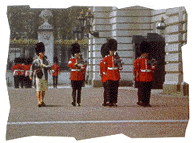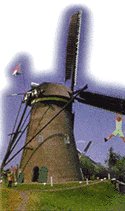Whoever said, “It’s a small world after all,” obviously hasn’t attempted to drive all the roads or visit every body shop on Earth. Fortunately, the travel budget at BodyShop Business is so astronomical that they were able to send this reporter around the globe to investigate collision repair on a worldly scale. It was a packed two-day trip to 17 different countries, and we have the pictures to prove it.
What did we find out? Well, for one thing, no industry concern is exclusive to just one nation. The collision industry is such a peculiar enterprise that in many cases, countries that are less developed are actually some of the best places to run a repair shop. Along these same lines, many shops in nations experiencing substantial technological advancements may actually be suffering as a result of these advancements. And the volatile market forces also help to determine those who make money and those who work out of their cars, rather than on them.
Each country described here is unique, but at the same time, their concerns and benefits overlap.

Trinidad
Can you locate Trinidad on a map? Is it near where “Survivor” is filmed? I’m not sure, but one thing I do know is that when it comes to collision repair, Trinidad has advanced technology and knows how to use it. But the hard part is keeping technicians, not just in shops, but in Trinidad. Just north of Venezuela, the island of Trinidad has a population of about 1 million and has 120 shops ùù with 20 doing a majority of the work.
When you adjust to American dollars, the top techs only make about $5 an hour, and if you’ve ever been to Trinidad, you may notice that the cost of living isn’t much different than in the states. Hotel and restaurant prices are similar to what they are here. Because labor is cheap in Trinidad and techs are skilled craftsmen, this English-speaking pool of talent is starting to move to the United States, where they can do the same work for better wages.
But shops appear less concerned with technician defection than they do in keeping parts and materials costs down. Parts are expensive and hard to obtain. Trinidad shops don’t have parts places down the road. Often the parts must be imported from another country. Getting parts this way is quite expensive because of shipping costs and long-distance phone bills. If you had to call overseas every time you ordered parts, what would your phone bill be, even if it was only five cents a minute?
Electronic estimating is beginning to emerge in Trinidad, and shops and insurers are developing new partnerships. Parts repair pricing in Trinidad is standard. For example, the price to fix a bumper is the same no matter what type of car is being repaired. A result of these partnerships has been increased negotiating when it comes to billing for supplements. Insurers are becoming more analytical.
Despite the emergence of electronic estimating, many shops are still without estimating systems. They just look at a ding and determine the price on the spot.

Brazil
Like other countries in our tour, Brazil is considered an emerging collision repair market, despite having about 40,000 shops that do body work.
Costs of doing business are still relatively low, since investments in technology haven’t yet become a necessity. Also, the many miles of relatively substandard roads keep Brazilian body shops filled (the average repair costs $880). And with only one car for every eight people, Brazil’s automotive fleet certainly has room to grow.
While insurers are beginning to insist on more productivity and lower prices from shops, the influence insurers possess is still limited, especially since only 20 percent of motorists have insurance. This lack of insurance coverage means a number of independent shops (reputable or otherwise) can procure business without relying on insurers to give it to them. Although insurers are putting together lists of certified shops to send their clients to, for the time being, it’s fairly easy for a shop to say no to this since being in an approved network isn’t necessary for survival.
The number of independent shops has been decreasing during the last few years – especially as more technologically sophisticated equipment is needed – while the number of car dealer body shops has been increasing. Shop work has increased by about 40 percent over the last few years, but the number of technicians has fallen over that same period. Currently, the average technician earns about $5,640 a year.
Despite having an emerging collision repair market, Brazil’s repairers are already experiencing some of the problems that turn emerging markets into ones where repairs are more difficult and costly ùù like in the United States and much of Europe. For example, Brazil shops may soon be in a position that forces them to spend money in order to make money as training costs and equipment begin to rise.

South Africa
South Africa has a strong automotive and repair market. Car sales are brisk, and the accident rates are among the worst in the world.
Reasons for this include poor road conditions, a high number of bicyclists (meaning the need to build quality roads isn’t pressing) and in rural areas, animals crossing the street. What this means is shop owners have an adequate supply of business.
South Africa is considered a newer auto market, so the automobile hasn’t played a vital role for as long as in other developed countries. Despite this, the car market is a strong one.
Unlike in many other countries, South African motorists aren’t loyal to genuine parts. In fact, many consider any difference between aftermarket (A/M) and original equipment (OE) parts to be untrue. It’s believed that the term “genuine” has been created by car manufacturers as a way of implying they make a better product and thus raise prices. This lack of loyalty to OE parts means South African shops can fix cars at a lower price, whether replacing or repairing parts.
However, this makes it easier to engage in fraud, which insurers in South Africa have been complaining about. Insurance assessors (like our appraisers) have indicated that repair fraud is common, specifically regarding the use of counterfeit parts. Cases have been reported where shops removed a good part from a car and put a damaged part in its place for the assessor’s inspection. And in some cases, recycled parts have actually been taken off stolen cars. But shops aren’t acting alone. In some cases, assessors write up a false report and bill the insurer. Such occurrences are why the South Africa Motor Body Repairers Association (SAMBA) is trying to clean up the repair business. One such tactic is to employ a uniform Code of Conduct for shops to follow.
Dealer-approved networks also are taking shape in South Africa. One example is Toyota’s system of certified shops (the top level shops where at least 50 percent of equity is owned by a Toyota dealership) and approved shops (the mid-level shops that may be independent). To be part of that network, all shops must use genuine Toyota parts.

Spain
Spain seems to be separated from the challenges that plague neighboring European countries. For one thing, Spanish collision repairers aren’t experiencing a tech shortage, and customers still prefer to take their cars to small independent shops. And, unlike other shops in Europe and much of the world, Spanish shop owners aren’t pessimistic about the future.
This optimism may seem strange, since the number of shops in Spain has been steadily falling from its current level of about 15,000. This decline is due mostly to consolidation, which has, in turn, further polarized the large and small shops from each other. Nearly half of the shops are small, with 45 percent employing five or fewer people. The average shop has only six employees.
Direct repair programs (DRPs) are still a new thing in Spain and the lists of shops on such programs are informal at best. As a result, there isn’t as much insurer control or focus on customer service. Only 10 percent of shops offer courtesy cars, and this benefit isn’t free. It may be hard to provide a decent courtesy car anyway, since cars in Spain are aging thanks to a lack in scrap metal. One-third of the cars are at least 12 years old.
Shops in Spain aren’t pessimistic about the shortage of technicians, either. While there’s a lower proportion of people in higher education (indicating that fewer youths are motivated to attain a white-collar position), it’s still difficult to obtain experienced workers. To combat this, many shops employ an apprentice system so they have a pool of labor to choose from. It’s been said the tech problem isn’t a shortage of workers, but is, instead, the challenge of getting them to work; Spaniards have a more relaxed attitude toward labor than in many other European nations.
Though 80 percent of the shops use automated estimating, insurers feel those systems merely complement rather than replace assessors – so the role of the assessor is still prominent. The level of non-OE parts usage is difficult to determine but is believed to be high. Much evidence of fraud has been reported, with shops charging for OE but using non-OE and keeping the monetary difference for themselves or passing it onto the customer as a discount. As a result, estimating systems have begun allowing for non-OE parts.
The forecast for Spain calls for an increase in the number of repairs, an increase in repair costs and an increase in market value. At least for the next few years, there will be little pressure for Spanish body shops to increase productivity or efficiency.

France
Car sales have been slipping in France during the last 10 years, so car dealers have begun opening up their own body shops to make up for lost profits. But this hasn’t worked out quite the way dealers intended. With work from independent shops being cheaper, insurers end up directing 70 percent of their claims to independent shops. On average, dealer shops have higher hourly rates and more expensive jobs since they prefer to replace parts rather than repair them.
The use of non-OE parts to repair French cars is against the law in France and punishable by a fine. Non-OE parts are used only on cars not of French origin, and this practice is increasing in order to reduce costs.
In France, the insurer pays the motorist, who can then choose whether or not to get his car repaired. Customers may soon begin experiencing better customer service as shops do what they can to stay on insurer-approved networks. For example, some shops in Paris have reached the point where they fix a car without a customer ever seeing the facility. Someone from the shop picks the car up, leaves a courtesy car, and upon completion of the repair, the switch is made again. This whole process is indicative of the levels of customer service that are being attempted and could quite possibly become the norm.
The more shops an insurer has on a network, the better prepared insurers are to make processes consistent and keep costs down. Insurers are also pushing for shops to use computerized estimating systems as a way to further increase uniformity. As a corollary to this, insurers are attempting to reduce the number of shops from the current level of 19,000, making uniformity easier to manage.
As in most European countries, a tech shortage exists. To retain good employees, shops have developed incentive programs. Some owners offer a month’s salary as a bonus (getting paid for 13 months in a year rather than 12) or bonus pay for reaching particular productivity levels.

Belgium
Car dealers in Belgium have been building their own body shops to make up for a drop in car sales. But with independent shops still working for lower prices, some of the very big dealers have opened outlets that specialize in smaller repairs – the quickie jobs motorists don’t claim on their insurance. Why do something like this if it’s on repairs that won’t bring in much money? Because when someone comes in to get a little ding fixed, he may bring his car back when he needs a big ding repaired.
There are about 4,550 body shops in Belgium, and with the deregulation of insurance in 1992, insurers have been forced to find ways to cut costs to survive the increased competition. Many shops believe the purpose of assessors is to drive down repair costs. Unlike many other places, assessors in Belgium also perform post-repair inspections to make sure everything was performed adequately. Because all these house calls by assessors is getting expensive, insurers are pushing for more shops to implement computerized estimating systems and remote assessment.
There are maximum fixed labor rates in Belgium, and neither insurers nor shops are all that thrilled with them. Insurers say too many shops can work for less than the rates allow, and when they do, they keep the difference. Shops complain the rates are too low to ensure a quality repair. Estimate times come from two sources: the car manufacturer times (which insurers prefer) or body shop opinion based on their experience (which the shops prefer).
Insurers have been operating “approved repairer networks” since 1989. Insurers try to entice their customers with lower premiums to use a network member and will sometimes waive the accidental damage excess if they go to preferred shops. Motorists are paid directly by the insurance company, so they can choose a shop or keep the payment and buy a big-screen television instead.
Over the next few years, the number of shops in Belgium is expected to decline as fewer shops start up because of high initial operating costs and the difficulty in finding skilled labor. And with insurers attempting to get shops to compete with one another to see who can turn in the lowest bid for a job, shops that can’t work efficiently will disappear.

United Kingdom
The number of body shops in the United Kingdom has declined by 25 percent since 1991 to its current number of about 6,000. And this drop isn’t expected to end anytime soon. Currently, 60 percent of shops in the U.K. have less than 4,000 square feet of floor space, which means the potential for more consolidation is quite high.
In the early 1990s, shops could work with a surplus gap, and that was around 20 percent. Now it’s at zero. Shops are full, which means they have to work faster and for a lower cost, all without losing anything in quality. By 2002, it’s expected the repair market will be up 25 percent in value, up 13 percent in repair costs, but down 15 percent in the number of shops.
Little shops may be absorbed, but a “BodyShop Magazine” survey found the smallest shops (five or fewer people) and the largest shops (at least 20,000 square feet) to be the most efficient; more work is done per person in these shops than in medium-range shops. If the smaller, efficient shops sell to consolidators and become part of a medium-sized shop network, it’s possible that a drop in efficiency will result.
The independent shops, which make up about 59 percent of the market, average about 20 repairs a week. Forty percent of those independents carry out work for insurance companies, while the rest of the work comes from fleets and subcontracted work.
As far as technology goes, 15 percent of shops don’t have spraybooths, 23 percent use traditional (not HVLP) spray guns and 25 percent have no gun-cleaning machine. Such numbers are surprisingly high when one considers the implications this would have on the environment. Shops without this equipment cite a lack of financial resources for their refusal to purchase. But with strict regulations on environmental compliance, it would seem that a big fine would be more costly.

The Netherlands
It appears Dutch repairers see the glass as half full rather than half empty. Instead of complaining about the high proliferation of DRPs (70 percent of all insurance work comes from DRPs), shop owners appreciate the extra jobs. When it comes to the added pressure to reduce costs as a result of membership requirements to be on a DRP, shops owners don’t seem to mind that either, since they see such things as inevitable. Meanwhile, insurers like DRPs because they get work done at a relatively low cost and because the customer is happy. The insurance industry is so fragmented (the biggest company has 6.6 percent of the market) that DRPs are almost a necessity for insurers to remain competitive.
With DRPs being so prominent, how do smaller, non-DRP shops survive? Well, most of them get their business from third-party claims or from motorists who are liable and pay out of pocket. Some car dealers also subcontract body work to the smaller shops.
The average labor rate of the 1,500 collision repair shops in the Netherlands is $55 per hour, with an average repair cost of $1,340. The average technician salary is $40,000.
A technician shortage, along with demands to produce more at a lower cost, means shops have to find ways to keep skilled workers. Employee benefits and incentives are quite popular and are distributed based on group, rather than individual, performance to make it more fair.
When it comes to estimating, most of it’s computerized, so there’s no need for an assessor unless the cost of the repair exceeds the agreed amount. Currently, shops on DRPs are required to use OE parts, even though there’s been some discussion on whether to use non-OE for older cars and lower cost policies in order to reduce costs. But that hasn’t gotten very far since the Dutch favor recycled parts to A/M. Why? Because they’re better for the environment.
Environmental concerns are a prevailing factor in the way the Dutch do things. For example, the Netherlands was among the first countries in Europe to introduce voluntary agreement within the industry regarding control of volatile organic compound (VOC) emissions rather than rely on legislation. Such action was far ahead of implementation of similar European Union (EU) policies on VOCs.

Germany
When it comes to collision repair in Germany, repair tickets and labor rates are a lot higher. The labor rate is around $66 an hour, and the average repair cost is $2,100. This may explain why motorists who live in border towns sometimes take their damaged cars to a shop in the country next door (the Czech Republic, for example). However, the rates can be lowered by using non-OE parts or by finding shops that offer discounts. (About 29 percent of all accident repairs are paid out of pocket by the consumer, with no insurer involvement.) While Germany has about 7,500 specialized body shops, another 40,000 repair shops do body work on a limited basis. Shops perform between 25 to 30 repairs per week.
Though insurers don’t dominate the repair market in Germany, they’re still demanding that shops reduce costs. Strangely enough, insurers rarely push for non-OE parts. Part of the reason insurers want shops to reduce costs is that since the German insurance industry has been deregulated, insurers are faced with more competition and decreasing profits. Currently DRPs don’t exist, but some say it’s only a matter of time.
To reduce costs, German shops are beginning to do things a bit differently. For example, it’s common for panel work to be done at one shop (a body specialist) and the paint work to be done somewhere else (a paint specialist). But this system can be expensive, so some groups of shops have gotten together to open shared paint specialist operations of their own. Other shops are focusing on customer service and buying expensive new equipment. By being proactive, these shops are hoping to exploit the process of change for their benefit. Plus, change is inevitable – especially since customers in Germany are demanding more, like free delivery, detailing, etc. The shops that figure out how to provide these services most efficiently will survive.
Day One Is Over
Before Mike traveled to the other eight countries in his whirlwind tour, we let him nap. Though the flight from Germany to Italy was short, he got some much needed rest … as will your eyes. Next month, we’ll pick up with our world traveler as he reveals more about the global collision repair industry in Italy, Turkey, India, China, South Korea, Japan, Australia and New Zealand.
Writer Mike Lawrence is the associate editor of BodyShop Business. Special thanks to Robert McNab at mfbi for providing research materials for this article.













